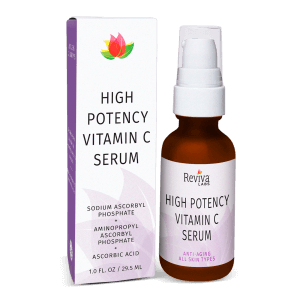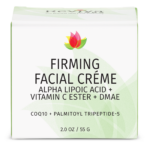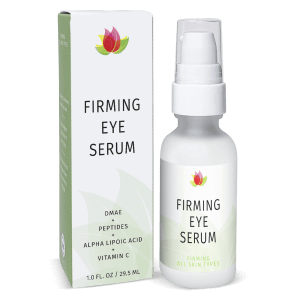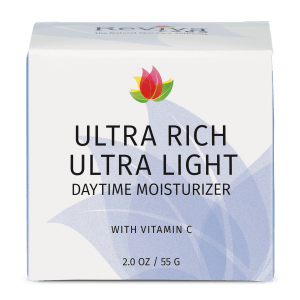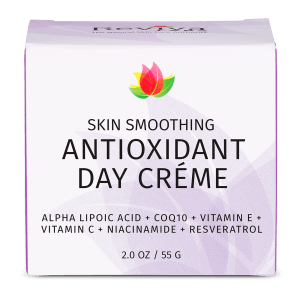Reviva Labs, Skin Care
Why Are There So Many Types of Vitamin C in Skincare?
Walk into any skincare aisle, and you’ll be bombarded with products boasting vitamin C on their labels. But when you flip those bottles over, the ingredients list reads like a mix of unfamiliar scientific terms: ascorbic acid, sodium ascorbyl phosphate, tetrahexyldecyl ascorbate… and that’s just the beginning. Why are there so many different forms of vitamin C in skincare products, and how do they differ? Let’s break it down.
The Skincare Power of Vitamin C
Vitamin C is a beloved ingredient for many reasons. Known primarily for its brightening properties, it helps combat hyperpigmentation, uneven skin tone, and dullness. Its antioxidant benefits also protect the skin from free radicals—those pesky molecules that can accelerate aging. Studies have shown that vitamin C can also boost collagen production, helping the skin maintain its youthful firmness and elasticity.
But despite all of its benefits, vitamin C is notoriously tricky to formulate. This potent ingredient is incredibly unstable and can oxidize quickly when exposed to light, air, or heat. This is why cosmetic chemists have developed so many variations of vitamin C, each designed to offer similar benefits with greater stability or improved delivery into the skin.
Why Stability Matters
Before diving into the different forms of vitamin C, it’s crucial to understand why stability is such a hot topic when it comes to this ingredient. The most well-known form of vitamin C, ascorbic acid (also called L-ascorbic acid), is a powerhouse. It’s pure, potent, and loved for its ability to deliver visible results. But there’s a catch—it’s incredibly unstable.
Once ascorbic acid is exposed to air or light, it can start to degrade, reducing its effectiveness and potentially causing irritation. That’s why you’ll often see vitamin C serums packaged in dark, opaque bottles and why you’re sometimes advised to store them in cool places. The hunt for a stable vitamin C that can withstand the harsh realities of skincare packaging has led to the creation of several derivatives.
The Key Players in the Vitamin C Game
Let’s look at some of the most common types of vitamin C you’ll find in skincare and how they stand up against each other.

Ascorbic Acid (L-Ascorbic Acid)
This is the form of vitamin C you’re probably most familiar with. It’s the purest and most researched form, with a mountain of clinical studies supporting its benefits. When applied to the skin, ascorbic acid provides powerful antioxidant protection, helps stimulate collagen production, and improves skin tone. But as we discussed, it’s also incredibly unstable, especially in water-based formulas. To be effective, ascorbic acid needs to be at a low pH (typically below 3.5), which can make it irritating for sensitive skin.
If you’re using a product with ascorbic acid, make sure it’s stored properly to avoid oxidation. When ascorbic acid oxidizes, it not only becomes less effective but can also turn a yellow-brown color—definitely not something you want to rub on your skin!
Sodium Ascorbyl Phosphate
This is one of the more stable forms of vitamin C. Unlike ascorbic acid, sodium ascorbyl phosphate is water-soluble and less likely to degrade when exposed to light or air. What’s more, it’s less irritating than ascorbic acid, making it a great option for sensitive skin types. Sodium ascorbyl phosphate needs to be converted by enzymes in the skin into ascorbic acid to deliver its benefits, which can make it a slower-acting option. However, its stability and gentleness make it a popular choice for daily use.
Magnesium Ascorbyl Phosphate
Like sodium ascorbyl phosphate, magnesium ascorbyl phosphate is a stable, water-soluble derivative of vitamin C. It’s often used in creams and lotions due to its excellent stability in water-based formulas. While it might not be as potent as ascorbic acid in terms of direct antioxidant activity, it’s still an effective brightening agent and is less likely to cause irritation.
Magnesium ascorbyl phosphate has been found to have some collagen-boosting properties, though its effects may not be as dramatic or quick-acting as those of ascorbic acid. If you have dry or sensitive skin, you might appreciate the gentleness of this form.
Tetrahexyldecyl Ascorbate
One of the newer kids on the block, tetrahexyldecyl ascorbate is an oil-soluble form of vitamin C. This means it can penetrate deeper into the skin than water-soluble forms, potentially offering more significant long-term results. It’s incredibly stable, even in the presence of air and light, which makes it a fantastic option for formulations that need to last.
Because of its oil-soluble nature, tetrahexyldecyl ascorbate is often used in creams and serums designed for drier skin. It’s less likely to cause irritation than ascorbic acid, making it suitable for people who struggle with sensitivity. However, it tends to be more expensive than other forms of vitamin C.
Ascorbyl Glucoside
This is another stable, water-soluble derivative of vitamin C. Ascorbyl glucoside is made by attaching glucose to the ascorbic acid molecule, which helps improve its stability. Once applied to the skin, enzymes break down the molecule to release the pure vitamin C. Ascorbyl glucoside offers similar brightening and antioxidant benefits as ascorbic acid but is gentler and more stable, making it a good choice for those with sensitive skin.
Research suggests that ascorbyl glucoside is effective in improving skin tone and reducing hyperpigmentation, though it may not be as strong as ascorbic acid in terms of collagen-boosting properties.
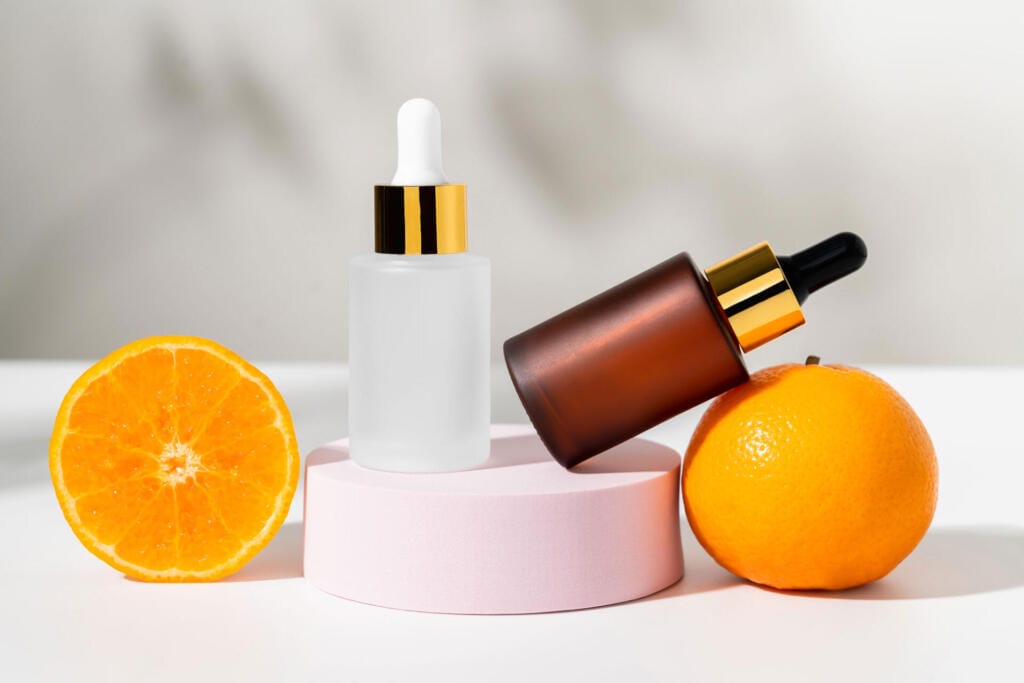
So, Why So Many Choices?
The variety of vitamin C types in skincare isn’t just a marketing ploy—it’s a necessity. Different skin types and conditions call for different forms of vitamin C. Sensitive skin might not tolerate the low pH of ascorbic acid, while someone looking for deeper penetration might prefer an oil-soluble option like tetrahexyldecyl ascorbate. The right form of vitamin C for you depends on your skin type, concerns, and how much patience you have when it comes to seeing results.
The Role of pH in Vitamin C Effectiveness
One of the key differences between the various forms of vitamin C is their pH requirements. Ascorbic acid, for instance, needs to be in an acidic environment (pH below 3.5) to penetrate the skin effectively. This is why products with ascorbic acid often feel tingly or cause irritation—especially for those with sensitive skin.
In contrast, vitamin C derivatives like sodium ascorbyl phosphate and magnesium ascorbyl phosphate are stable at a higher pH, which makes them less likely to cause irritation. However, this also means they may not be as potent or fast-acting as ascorbic acid. That said, a product with a higher concentration of one of these derivatives can still deliver impressive results, particularly for brightening and protecting the skin from environmental damage.
How to Choose the Right Vitamin C for You
Choosing the right vitamin C depends largely on your skin type, your skincare goals, and how much you’re willing to spend. If you have resilient, oily skin and want fast, visible results, a product with a high concentration of ascorbic acid might be your best bet. However, if you have dry or sensitive skin, or if you’re simply looking for something you can use every day without irritation, a more stable derivative like sodium ascorbyl phosphate or tetrahexyldecyl ascorbate could be a better option.
It’s also worth noting that concentration matters. A product with 15-20% ascorbic acid will deliver powerful results, but those with sensitive skin may need to stick to lower concentrations to avoid irritation. Derivatives, on the other hand, often work well at concentrations of 5-10%, depending on the specific form.
The Bottom Line
Vitamin C is a star in the skincare world for a reason—it works. But finding the right form for your skin can be a bit of a journey. From potent ascorbic acid to gentler derivatives like sodium ascorbyl phosphate and tetrahexyldecyl ascorbate, there’s a form of vitamin C for everyone. Whether you’re battling dark spots, trying to slow down the signs of aging, or simply looking to brighten up your complexion, vitamin C can be a game-changer.
No matter which form you choose, the key is consistency. Incorporate it into your routine, pair it with sunscreen (because vitamin C boosts your sun protection), and give it time to work its magic. Your skin will thank you!







